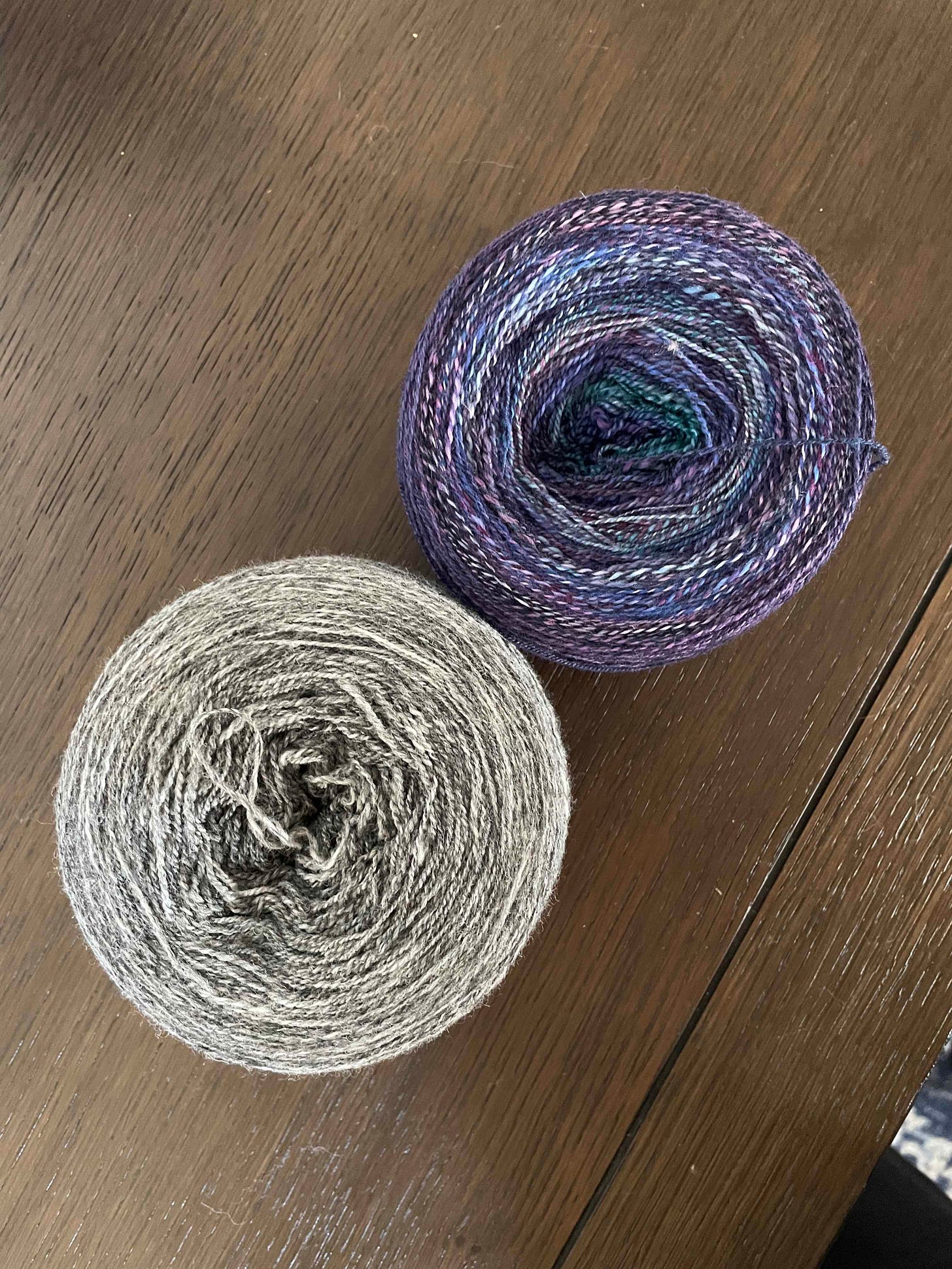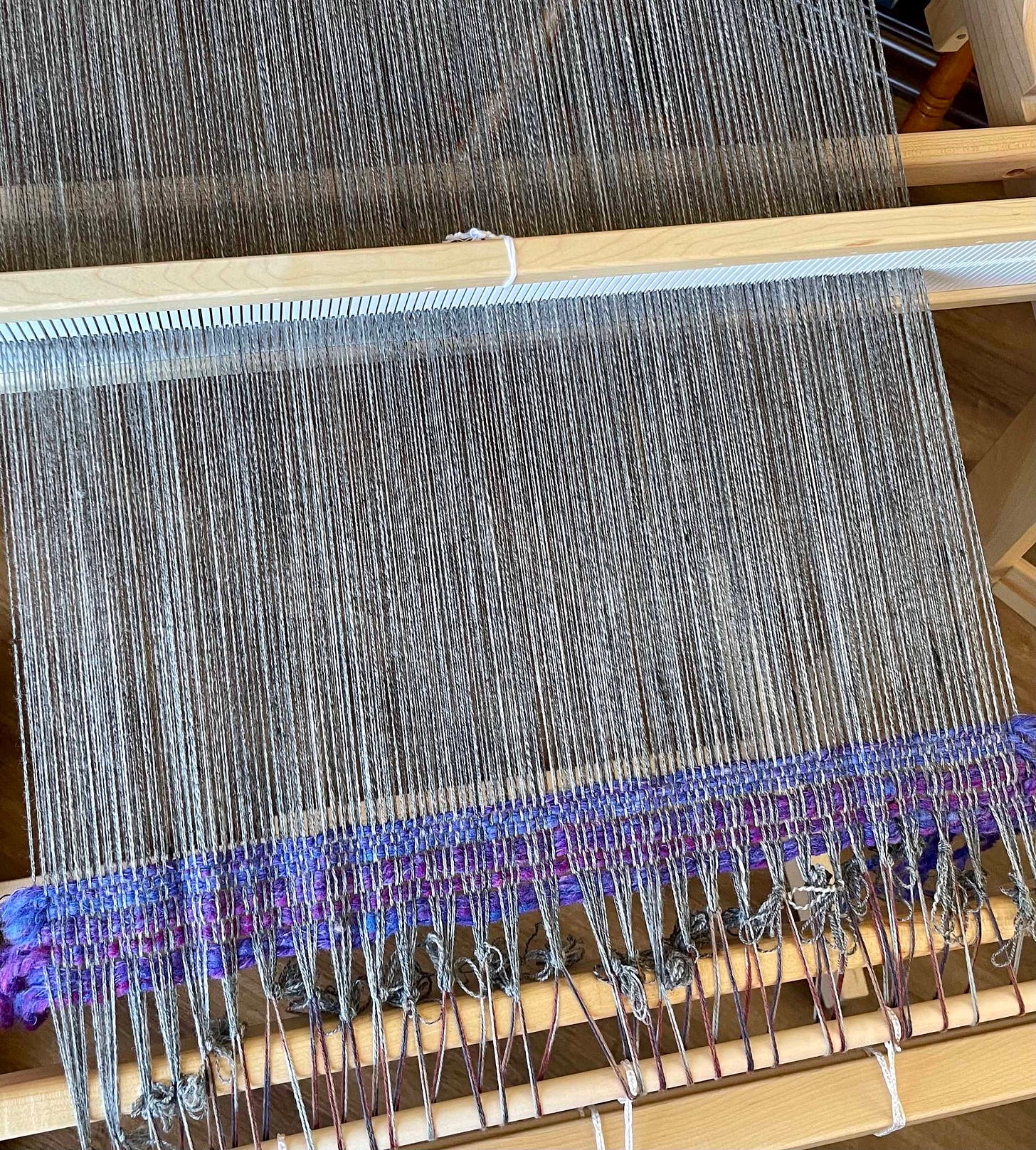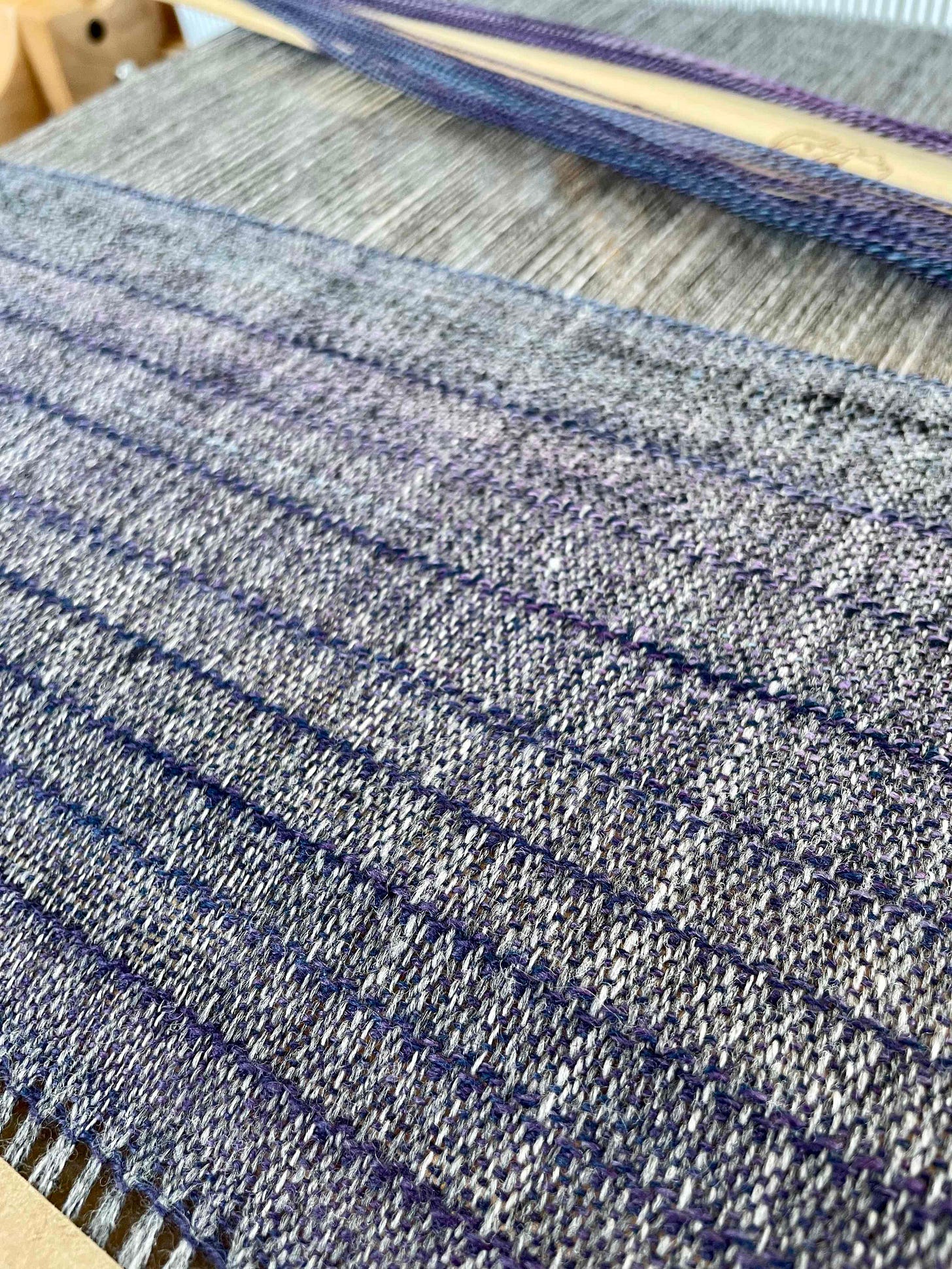I started another weaving project. Not a shock, I know!
For this, I wanted to use two handspun yarns. I used the gray as a warp and the purple as a weft.
A slight jump ahead, but I want to put this next photo somewhere — once the loom was warped, I wound the weft yarn onto shuttles (these long sticks with notches at the ends). The yarn isn’t a gradient, but I still wanted to keep the colors in the order they were, so that involved making several smaller balls of yarn and winding them onto shuttles, then making sure to keep everything organized.
I thought about using the leftover warp (gray) in the weft, too, but I’m glad I didn’t. You’ll see why later. . . .
Anyway. Both yarns are very fine — I tend to spin very fine yarns — and because of this, I needed to try something new. Rigid heddle looms, like I have, aren’t immediately set up for such fine yarns; the finest heddle on my loom goes to 12 ends per inch (12 strands of yarn per inch), but if I wove these yarns at that setting, the final cloth would be very loose and holey, which is a choice one can make, but not the choice I wanted. I wanted something with a little more structure and density.
So I decided to double the ends per inch by threading two yarns through every slot and two yarns through every hole. (Twenty-four ends per inch!) That worked to make the fabric the desired density! But . . . I didn’t like the way the cloth looked.
I don’t have a photo of the weaving I started, so you’ll have to use your imagination; the purple yarn in this photo is just waste yarn, meant to spread the warp out from those little bunches. The waste yarn gets removed later.
You might have to zoom into the photo to see, but because of the way the heddle was threaded — two in the slots, two in the holes — the “plain weave” wasn’t plain weave.1 Which. Duh. You’d think that would be obvious, but somehow it didn’t actually make sense to me until I was doing it. And the weft yarn was overwhelming the warp — all I could see was the purple I was weaving with. So I took it out and considered my options.
I recently bought a couple of pickup sticks. And I could make string heddles. Both of those would have added different patterns to my fabric. But it wouldn’t have solved the plain weave problem.
Well, I'd also bought more regular heddles. This loom has slots for a second heddle, and after watching a couple of videos about threading for a second one,2 I removed one strand from each hole and put it in a slot. Then I inserted the second heddle and threaded that.
It took hours.
But finally, I finished threading both heddles and tied the ends onto the loom. Adjusting the tension across the whole warp required a lot of fiddling. I wanted to use the “lashing on” technique3 (as you can see in the photo above), but every time I adjusted the tension on one bundle, it affeced the bundles around it. Eventually, I gave up on that and tied the ends onto the rod.
I’m a lot happier with the cloth now — it’s what I envisioned to start with. And because I’m using two heddles, I can make a real plain weave . . . and I can move one heddle at a time and make rows with slightly different patterns, as you can see in the next photo:
This whole process took days before I could actually weave. I’m pretty sure my husband thought I’d be fiddling with the warp forever, because every time I showed him an update, it was just things like, “Look here’s where I spent seven hours moving these yarns from this hole to this slot.” He’s a good sport, though. He listened to every step, asked questions, and admired what appeared like a whole lot of nothing happening.
I thought all that was going to be the end of my learning experiences on this cloth, but then . . . a warp thread broke. This was the first time it had ever happened to me.
Fortunately, even before I got my loom, I’d watched several videos on how to fix this. And so I did. It was momentarily alarming, but in the end, it wasn’t very hard.
Like so many other things in life, learning to weave seems to be about learning to fix my mistakes.
Plain weave should be one thread up, one thread down. This was two warp threads up, two warp threads down. It was a pattern. A fine one. Just not the one I wanted.
I’d watched these videos before, so I already knew what to do basically . . . but I wanted to make sure. It’s the kind of thing you don’t want to have to do twice. It’s very time consuming to thread hundreds of ends of yarn through tiny slots and holes.
You get less waste with lashing on. It’s my preferred method, but tying on is a lot more straightforward.






The weave looks so beautiful! I would love to learn how to do this!